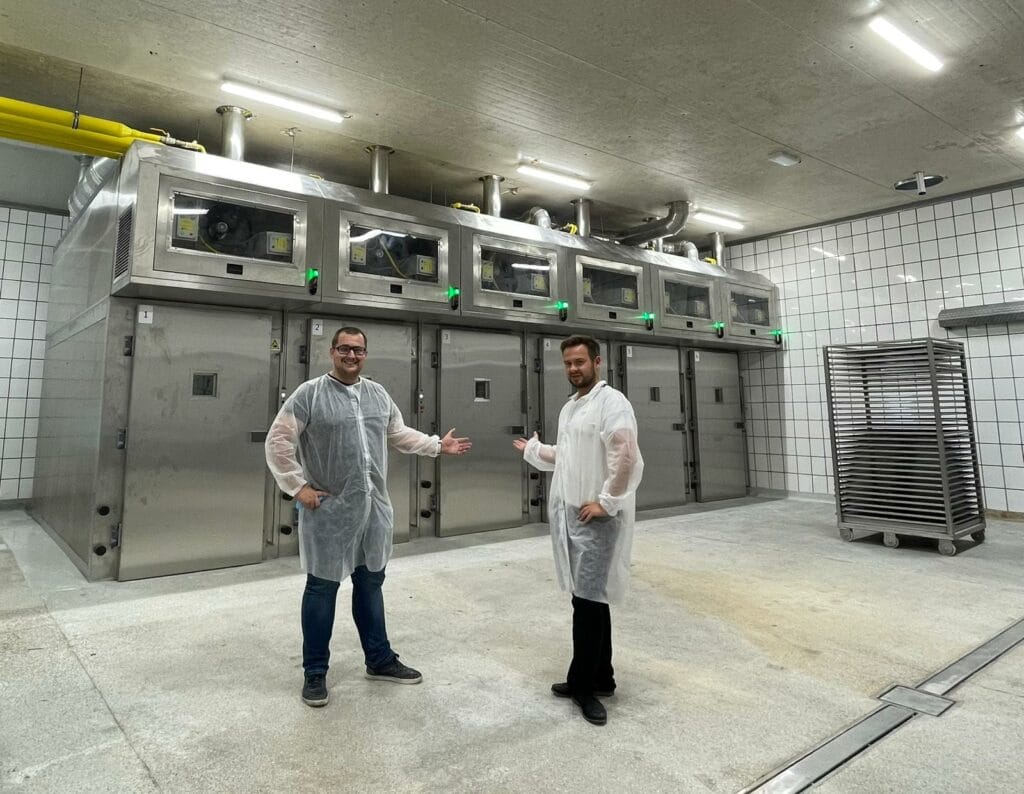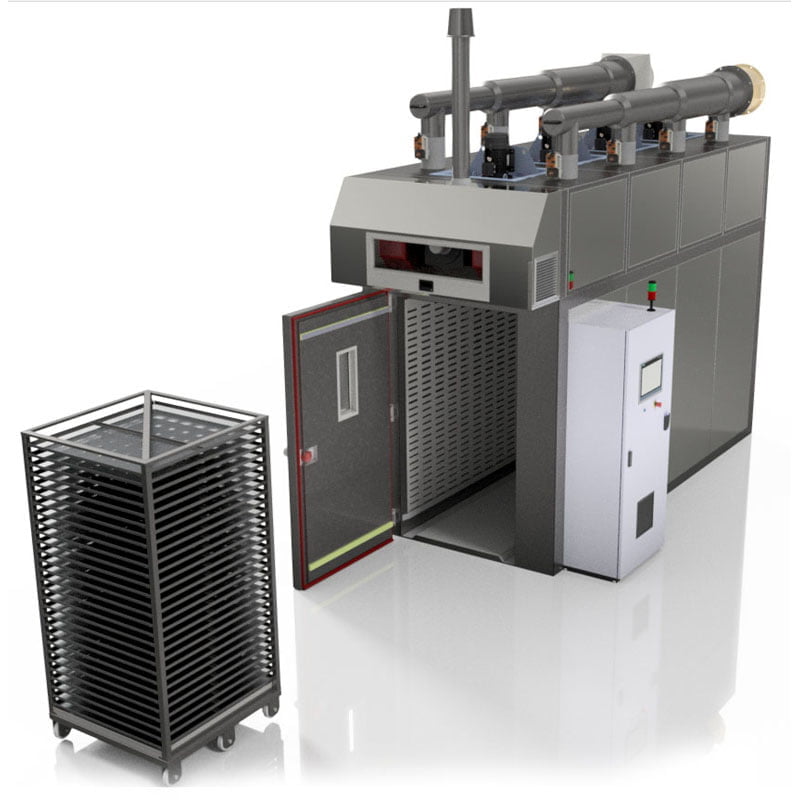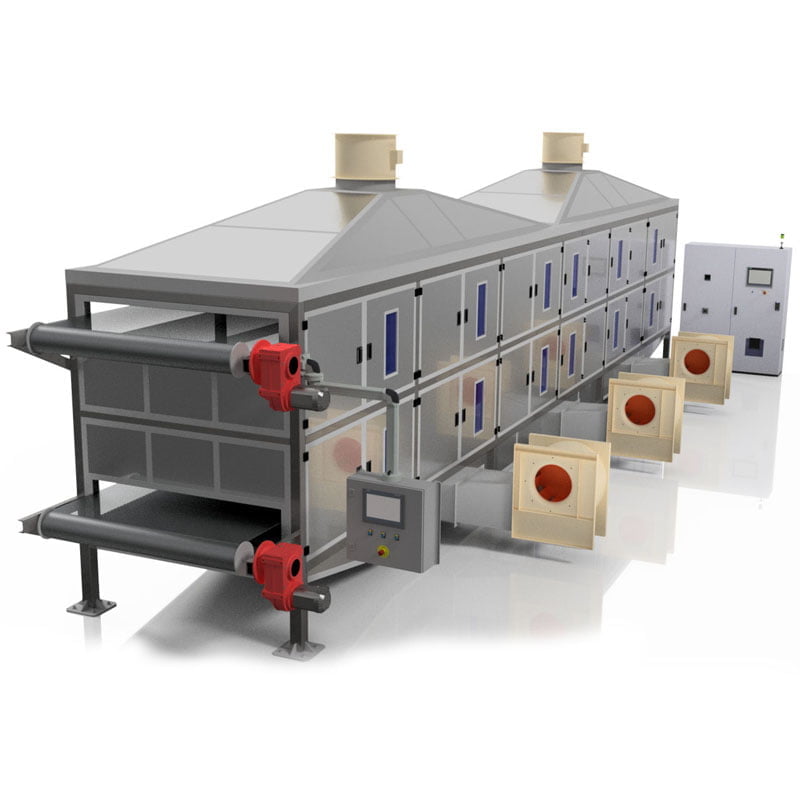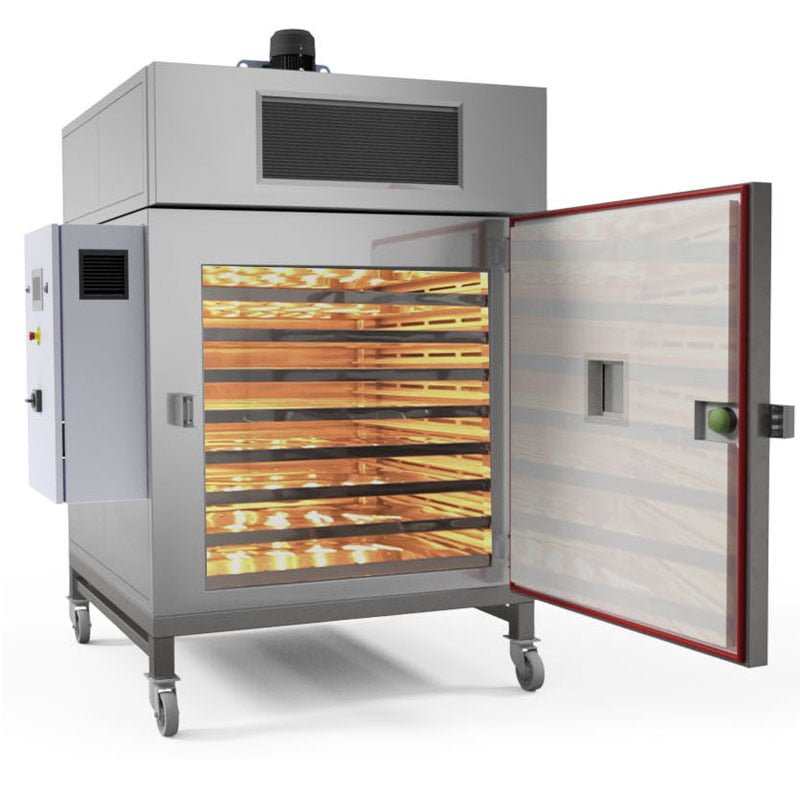Piece przemysłowe EAPOL to nowoczesne rozwiązanie dedykowane do obróbki chemicznej, metali, wypalania, suszenia oraz wielu innych procesów wymagających precyzyjnej kontroli temperatury.
Konstrukcja i materiały
Nasze piece wykonujemy z materiałów odpornych na wysokie temperatury, takich jak ceramika, beton ogniotrwały oraz specjalne stopy stali. Stosowana izolacja zapewnia stabilne warunki wewnątrz komory i minimalizuje straty energii, co przekłada się na efektywność procesów technologicznych.
Systemy grzewcze i wentylacji
Zaawansowane systemy grzewcze umożliwiają wykorzystanie różnych źródeł energii, a precyzyjna kontrola parametrów termicznych pozwala na dokładne ustawienie cyklu pracy – od nagrzewania, przez utrzymanie temperatury, po kontrolowane chłodzenie. Nowoczesne systemy wentylacji, wspierane przez inercyjne gazy ochronne, takie jak azot, gwarantują równomierne rozprowadzenie ciepła i skuteczne usuwanie produktów ubocznych procesów.
Zabezpieczenia i bezpieczeństwo
W trosce o bezpieczeństwo użytkowania piece wyposażamy w alarmy przeciwpożarowe, systemy awaryjnego wyłączania oraz zabezpieczenia przed przegrzaniem, co pozwala na bezproblemową eksploatację nawet w najbardziej wymagających warunkach przemysłowych.
Zastosowania i korzyści
Nasze urządzenia znajdują zastosowanie w procesach obróbki metali, spiekania, odprężania, normalizacji oraz wygrzewania. Elastyczność konstrukcji umożliwia dopasowanie parametrów do indywidualnych potrzeb klienta, co przekłada się na lepsze właściwości mechaniczne i strukturalne materiałów. Dzięki wysokiej efektywności energetycznej i niezawodności naszych pieców, firmy zyskują przewagę konkurencyjną i optymalizują procesy produkcyjne.
Piece mają zastosowanie w takich dziedzinach przemysłu jak:
- produkcja ceramiki,
- topienie, formowanie i hartowanie szkła,
- produkcja narzędzi,
- przemysł lotniczy,
- przemysł chemiczny,
- przemysł farmaceutyczny,
- automotive industry.
Accessories and additional features:
- czytnik kodów kreskowych,
- system rejestracji danych produkcyjnych wraz z raportem,
- zdalny dostęp do urządzenia i otrzymywanie powiadomień na telefon,
- audit trail.
Piec przemysłowy — komorowo półkowy
| Price: zapytaj nas | Contact us |
General Information:
- furnaces designed for conducting production processes;
- możliwość budowy pieca wózkowego lub taśmowego;
- maximum load depends on the furnace construction.
Heating source:
- electric power.
Construction:
- stainless steel AISI 304, AISI 316, galvanized, painted;
- ceramic furnace lining.
Control system:
- 7″-22″ Standard or INOX operator panel, ability to set the process in steps;
- delayed start;
- automatic chamber cooling after completed the process;
- remote access to the PLC;
- precision of the temperature sensor: ± 0,35 °C;
- production data recording on a USB drive.
Electrical specifications:
- from 5 kW (depending on the configuration).
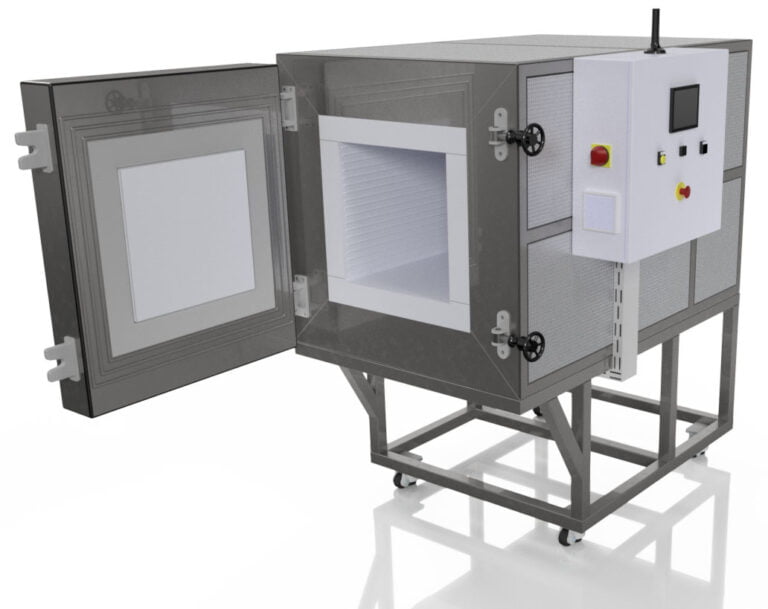
EAPOL
Technology is our passion.
EAPOL Sp. z o.o. od 24 lat dostarcza innowacyjne rozwiązania w zakresie automatyzacji przemysłowej i budowy maszyn. Nasz doświadczony zespół inżynierów realizuje projekty, które zwiększają efektywność i redukują koszty dla klientów z różnych branż.
We have completed 156 projects, offering system design, machine construction, modernization, and service. Our advanced technologies help companies gain a competitive edge and grow in a rapidly changing industrial environment. Customer trust is our greatest motivation.
EAPOL Sp. z o.o. – Innowacyjność, na której możesz polegać.
